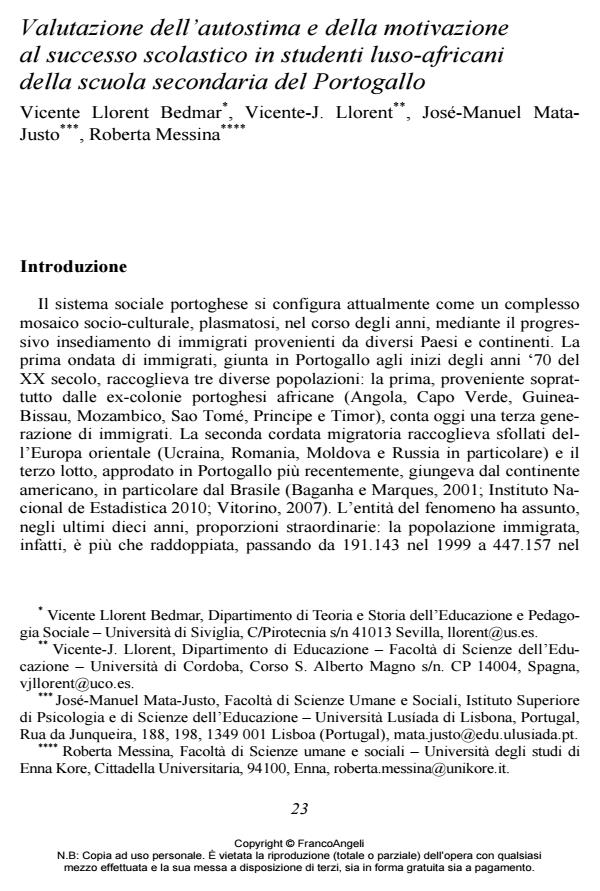Self-esteem and motivation assessment in Luso-African secondary school students in Portugal
Journal title CADMO
Author/s Vicente Llorent Bedmar, Vicente-J. Llorent, José-Manuel MataJusto, Roberta Messina
Publishing Year 2013 Issue 2013/1
Language Italian Pages 18 P. 23-40 File size 216 KB
DOI 10.3280/CAD2013-001003
DOI is like a bar code for intellectual property: to have more infomation
click here
Below, you can see the article first page
If you want to buy this article in PDF format, you can do it, following the instructions to buy download credits

FrancoAngeli is member of Publishers International Linking Association, Inc (PILA), a not-for-profit association which run the CrossRef service enabling links to and from online scholarly content.
Given the international relevance of the Portuguese migration policies, this survey investigates the inclusion and integration processes related to secondgeneration immigrants who come from Portuguese-speaking African countries and attend the upper-school in Faro and Setúbal (Portugal). To reach this goal, during the 2009-2010 school-year, we realized a quantitative survey focusing on students’ educational achievement and its influence on teaching-learning processes. For this aim, we administrated a Likert’s scale questionnaire which measures the factors that play an important role in reaching the educational goals. We found that the most relevant and significant factors which contributed to the educational achievement of students were intrinsic: motivation processes and self-esteem.
Keywords: Secondary education, integration processes, motivation processes, selfesteem, second-generation immigrants
Vicente Llorent Bedmar, Vicente-J. Llorent, José-Manuel MataJusto, Roberta Messina, Valutazione dell’autostima e della motivazione al successo scolastico in studenti luso-africani della scuola secondaria del Portogallo in "CADMO" 1/2013, pp 23-40, DOI: 10.3280/CAD2013-001003